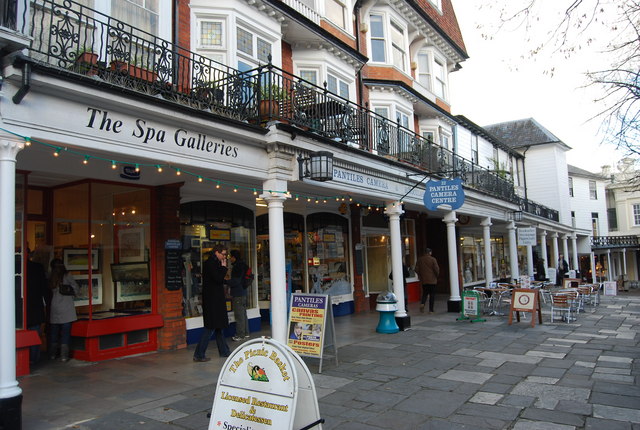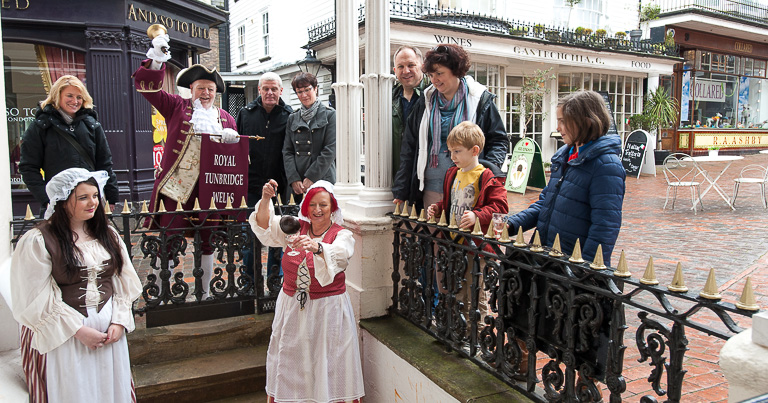The Chalybeate Spring gives Tunbridge Wells its name. Dudley Lord North, who noticed the reddish-brown waters foaming from the ground, discovered it was drinkable in 1606. North was returning to London after a stay at the Abergavenny Estate, and hoped to quench his hangover-thirst with the Spring water.
North declared it to be health-giving, and the news of its supposed exceptional properties circulated. Nobility from London and beyond began flocking to the Spring. Consequently a hamlet developed around it.
This resulted in the town’s being named Tunbridge Wells (it is close to Tonbridge, whose name was already taken as a town).
In the eighteenth century, the Chalybeate Spring developed its own ritual for noble visitors to ‘The Wells’. Each day, a tumbler of the spring water would be served by a ‘Dipper’. A small fee would be paid, not for the water, but for being served in a genteel fashion.
This tradition is still in practice. In the summer months, visitors can still sample the spring water, and have it served by a costumed Dipper. Indeed, interested parties can read more about a Dipper’s day, and about guided group tours.
The pantiles is probably the town’s best-known attraction. It is a pedestrianised street with shops and cafes, and its replete with elegant Georgian architecture (most of the buildings are listed), and gets its name from the square tiles that it was originally paved with. It has been shortlisted as one of Britain’s best high streets. The selection panel were impressed by ‘recent investment, strong branding, the extensive events programme and good community spirit’.

Read more about spa towns in our feature here.

